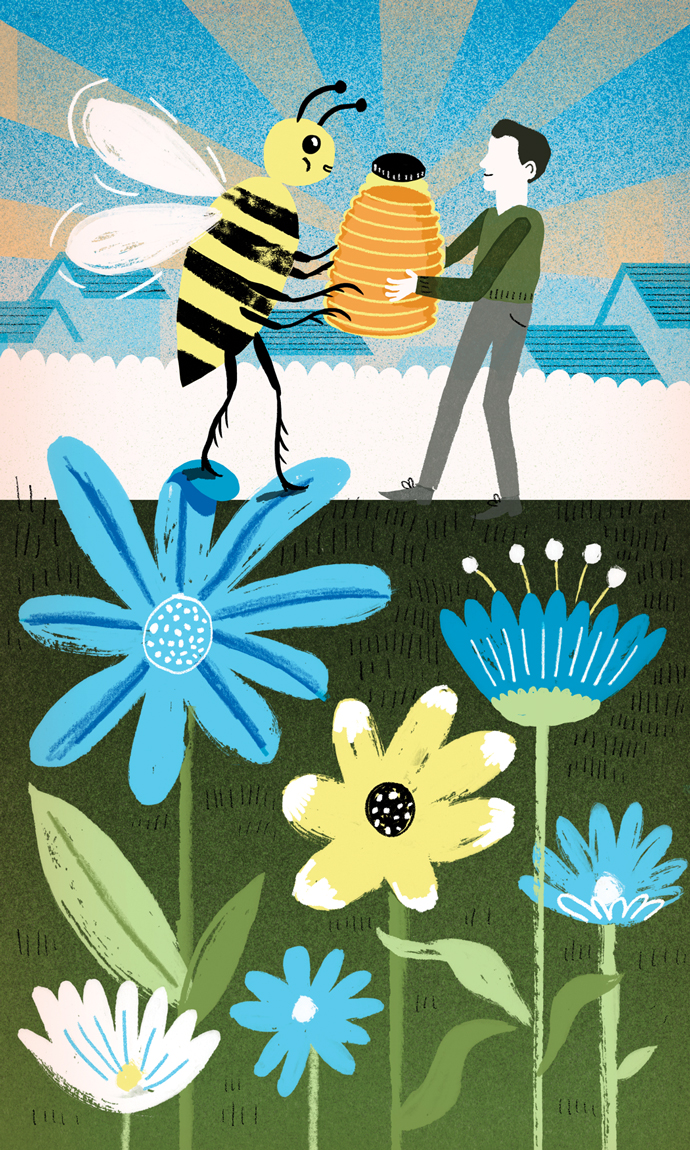illustration by Byron Eggenschwiler
Jocelyn Crocker and Mike Hamilton sit in their living room in front of bottles of honey of all shapes and sizes. The honey itself is also different, ranging from a dark, rich toffee to an exceptionally light yellow. Crocker opens each of the jars, and uses a spoon to illustrate the differences in texture; the honey crystalizes at a different rate depending on the fructose level in the flowers.
Each container of honey has been harvested from different spots in Edmonton. Members of YEG Bees had come up with the idea of selling samples from different neighbourhoods in 2015, but they didn’t have any surplus until 2016. They began working on the paperwork, so that they’ll be able to sell at farmers’ markets this year.
“With the larger co-ops, all the honey gets mixed together and the goal is consistency of flavour. So, it all tastes the same, like a fast food chain. But the goal of the urban honey co-op is to highlight the differences,” says Bajer, who is also involved with the co-op.
Honey can taste as different as the flowers from which it comes; and rural honey generally has a different flavour from urban honey. But urban honey can even have a different flavour profile when collected from hives that are just a few blocks away from each other. The reason, says Bajer, is because there is a diversity of plants you wouldn’t typically find in country where monoculture crops are sometimes the norm, creating a similar flavour of honey within larger areas.
Today, Crocker and Hamilton are allowing me to taste test a few samples left over from their harvest. Flight of the Bee, says Crocker, will include four or five small samples of honey with seven neighbourhoods participating. The average amount of honey produced from a hive is 140-160 pounds, so Crocker says it’s easy for people to start producing more than they expected.
The first honey is by far the darkest. It tastes and hangs on the spoon like molasses; the strength of the flavour would make it great for baking. The honey was harvested from a wild hive that Crocker and Hamilton cut out of an old farmhouse near Spruce Grove.
